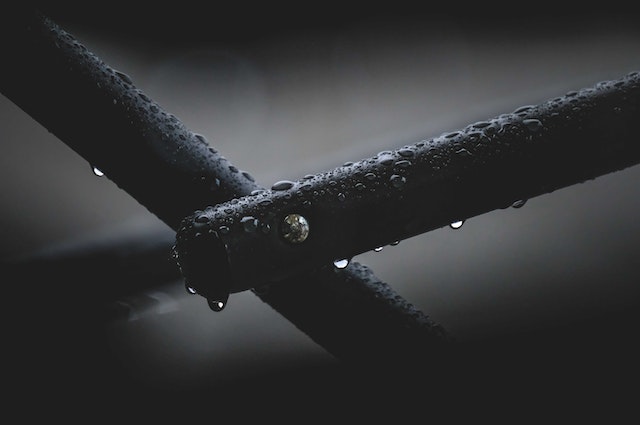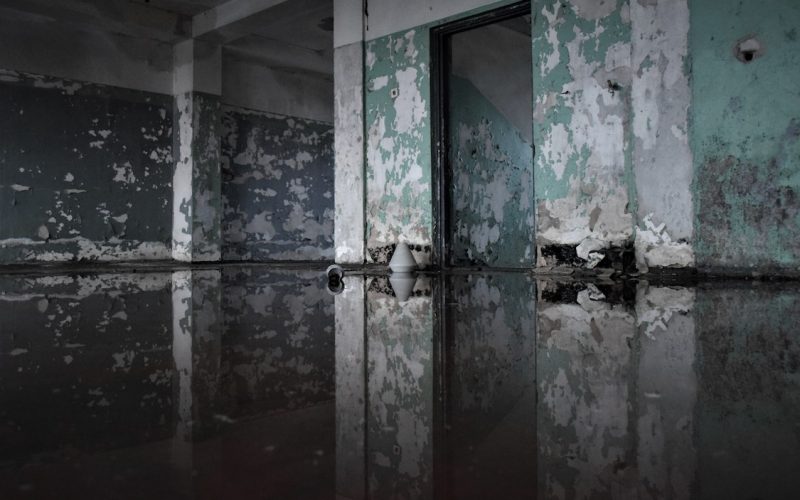Basement flooding can be devastating, caused by leaky plumbing systems or sewer backups; or through inadequate drainage around the foundation (due to poor landscaping or slope). Water seepage into your basement from outside sources may also occur resulting in its flooding.
If the groundwater or sanitary sewer level exceeds that of your basement floor, gravity will push that water into it through cracks and holes in its path to enter it.
Plumbing Leaks

People often associate basement flooding with storms and natural disasters; however, this phenomenon can occur at any time and for a variety of reasons – not only during storm season. Due to poor maintenance in summer or changing weather conditions, flooding in your basement may leave serious damage behind, including destruction of wood walls and floors, mold growth, insulation deterioration and electrical problems that will require costly and time-consuming repair measures to get under control.
If your basement has become flooded due to something other than heavy rain, leaking pipes may be to blame. Be sure to inspect toilets, sink drains and floor drains regularly as leaking may also contribute to flooding in these places. Inspect all appliances which use water such as washing machines as well. Having your septic tank inspected annually is also highly recommended if possible; should there be an indication of leakage, try shutting off all your household’s supply to see where the source might lie. If that fails, turn off all water supply at once to see where its source might lie.
Sewer backups are another common cause of basement flooding, often occurring when heavy rainfall overwhelms combined sewer systems and the sewage backs up into homes, leading to wet floors or raw sewage that may be hazardous if touched directly. Blockages in sewer lines, tree roots clogging the pipes or even vandalism may contribute to this form of flooding as well.
Cracked foundations can also contribute to basement flooding. Over time, cracks can widen and let in groundwater; therefore it’s essential that soil around your foundation be graded accordingly and that any existing cracks be filled immediately in order to stop further flooding from taking place.
Flooded basements can quickly reduce the value and safety of any home. When this happens, professional inspection and repair should be enlisted immediately; they can assess and provide solutions to restore your home while helping navigate any insurance claim processes that might arise.
Foundation Seepage
Water seepage occurs when soil around a home’s foundation pushes water upward through floor drains or cracks in its basement walls, usually due to both hydrostatic pressure and groundwater seepage.
Heavy rains may raise groundwater levels to such an extent that it seeps through cracks in a basement’s foundation, filling floor drains or floor drains and entering via floor drains and floor drains. This can often be linked to poorly designed foundations or the absence of exterior waterproofing (including membrane waterproofing and French drains).
An underground source often necessitates professional assistance for water removal and cleanup, followed by careful analysis by an experienced contractor to ascertain its cause and prevent future flooding events.
Flooded basements can also be caused by municipal sanitary sewer systems. Heavy rainfall can overwhelm them, and force raw sewage back up through floor drains into homes through toilet clogs or toilet backup. Installing and maintaining individual sewer lines are the key elements to keeping basement flooding at bay.
If you have recently moved into a home, check that its municipal sanitary sewer system is fully up-to-date and functional. In addition, be sure to purchase a sump pump which can work independently from this municipal system to prevent sewage backups in your home.
Trees or Shrubs Near the Foundation

Some homeowners plant trees or shrubs too close to their home, interfering with proper drainage of rainwater away from its foundation and potentially leading to cracking or sinkholes. Aim for deciduous plants like hydrangeas that will not interfere with this drainage if planting near foundation of home.
Tree roots often penetrate municipal sewer systems and cause backups into homes due to clogs in sewer lines; this results in flooding in basements during heavy rainfall events. If this is suspected as the source of basement flooding, it’s essential that floor drains, sink drains and window wells are regularly checked for signs of water or debris build-up and window wells regularly checked for debris build-up; should this occur, call in a plumber to unclog and test all relevant lines as soon as possible to reduce risks of backflow issues incase it comes flooding occurs again in future heavy rainfall events.
Backups of sewage often occur due to individual service lines becoming blocked with grease, waste, tree roots or breaks in pipes clogging them with obstructions such as grease. Once this happens, fecal waste can begin seeping through into your basement from inside your house and it must be flushed regularly with jetted sewer line cleaning service as this is an efficient and cost-effective method to clear obstructions in your pipes and prevent them from returning. To maintain clear service lines it’s vital that sewer jetting occurs regularly – which will ensure smooth service line operation while cleaning obstructions out and preventing future blockages clogging your sewer line jetted regularly if any obstructions reoccur.
If your basement tends to flood regularly and easily, installing and maintaining a sump pump could be the solution. When properly installed and maintained, sump pumps can effectively pump groundwater away from its foundation into surrounding lawns or storm sewer systems for disposal.
If your basement continues to flood during heavy rainfall, this could be a telltale sign that either your sump pump is failing to perform, or the groundwater levels surrounding the foundation have increased beyond what they should.
Flooded basements can be more than inconvenient and messy – they pose health and safety hazards for you and your family. To identify the source of flooding in your basement and take steps to prevent future episodes, schedule a complimentary waterproofing consultation with a professional to determine its cause and take preventive steps against future floods.
Poor Drainage

Water from roof or ground sources may seep into a basement during heavy rainstorms or melting snow, possibly caused by poor drainage system design or blocked downspouts. It’s essential that we understand why this occurs and take steps to prevent future incidents from arising.
Your exterior should be constructed so that water runs away from its foundation, using an effective drainage tile system to help direct this runoff away from your home and into its foundation. Routine inspection of this system should ensure all downspouts are effectively diverting water away from it, keeping pooled rainwater or groundwater from pooling next to or seeping into cracks in its walls, leading to seepage into basement walls through cracks. In order to maintain optimal performance of this system, regular check up on it with professional assessment should ensure all downspouts direct water away from its foundation walls – be sure all downspouts direct away from its foundation wall!
According to Jay Sanders from Castle Dream Construction, it’s crucial that it be repaired quickly to avoid flooding your basement when your drainage tile system becomes damaged. Downspouts should direct water at least five-six feet from the house towards either street or backyard drainage systems – any blockages such as leaves, twigs, seed pods or garbage may cause water levels around foundation to rise quickly and flood your basement.
Clogged sewer systems can also cause flooding. When city sewers become overwhelmed due to heavy rainfall or power outage and sump pump failure, sewage backs up into homes, flooding the basement through floor drains or toilets and overflowing into their home environment.
To avoid this from occurring, it’s essential that we’re mindful of what goes down our drains and into our sewer systems. Only flush toilet paper, human waste and commercially acceptable grease down these drains. If in doubt about whether something should go down there or not, contact a plumber immediately. Additionally, inspecting sewer lines regularly for blockages is also crucial as well as installing preventive plumbing aids such as sump pumps or backwater valves for added peace of mind.

